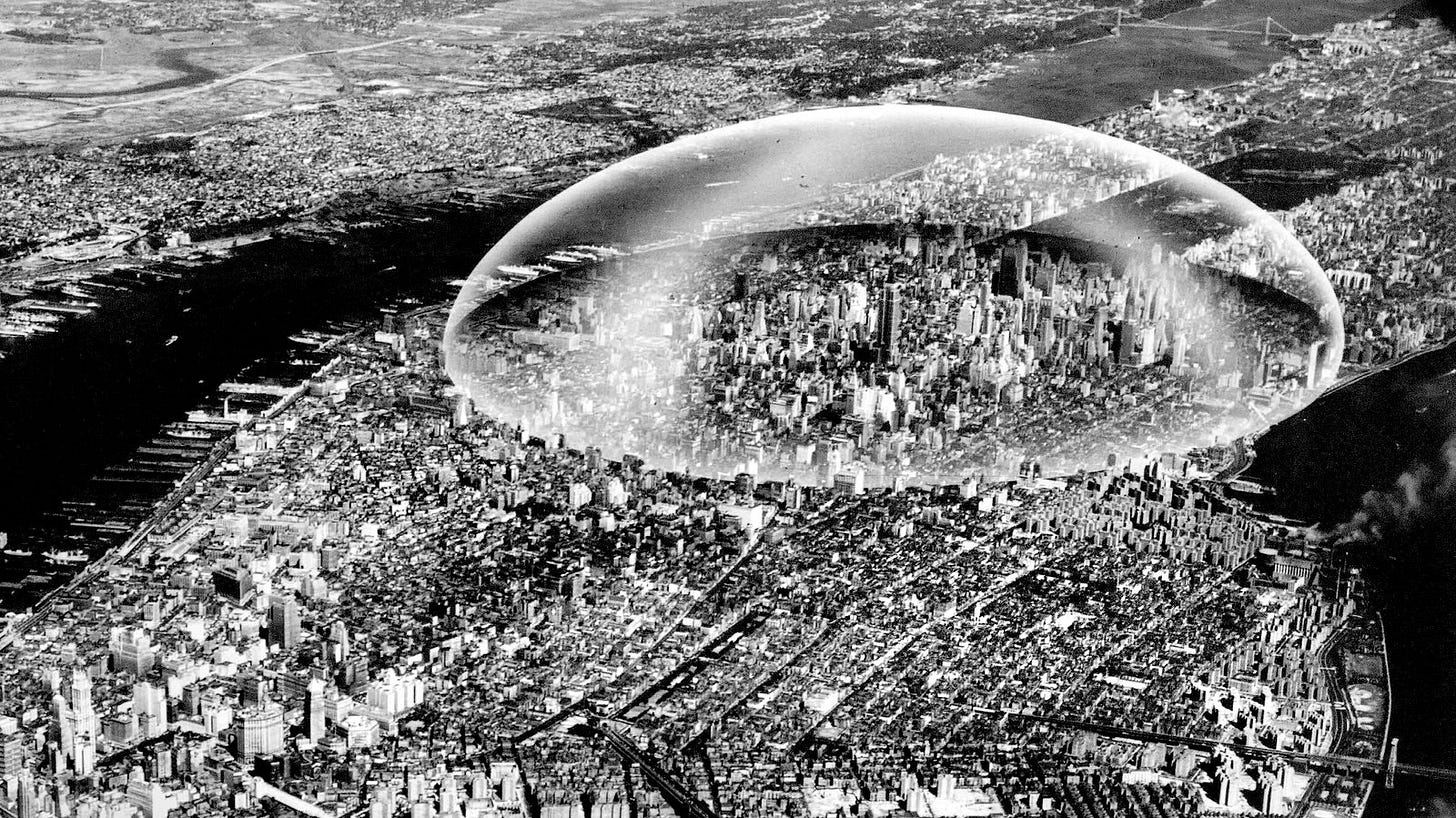Reading List 01/04/2025
Natural amenities in the US, the VC funding landscape, China’s starlink competitor, insurers of last resort, and more.

Welcome to this week’s reading list, a weekly roundup of news and links related to buildings, infrastructure, and industrial technology. This week we look at natural amenities in the US, the VC funding landscape, China’s starlink competitor, insurers of last resort, and more. Roughly 2/3rds of the reading list is paywalled, so for full access become a paid subscriber.
Natural amenities
This USDA website has a county-by-county map and dataset of the country’s “natural amenities” - the best and worst places to live based on a ranking that combines temperature in the winter and summer, sunshine, humidity, water access, and terrain variation. The west coast, south west, and Florida all rank highly, whereas the midwest scores very poorly, though it’s based on temperature data collected between 1941 and 1970 and has possibly changed since then.
(This is another map that is also a map of population growth, though the correlation here isn’t perfect.)
Related, this map from ABC News shows how snowfall has changed across the country over the past 50 years. On balance, it’s decreased:
VC funding
Pitchbook has an interesting report on the success of various startup accelerators (organizations which give funding and mentorship to very early stage startups.) Y Combinator unsurprisingly comes out on top in a lot of metrics, including “largest exits” and “cumulative capital raised”, though interestingly it seems to slightly underperform in “fraction of companies that later raised a round of funding.” (Click to embiggen.)
This data is super interesting, but it’s presented in an extremely unhelpful way; color-coding the years and not putting labels on the actual graphs makes it really hard to spot trends over time. It would be a good project for someone to extract the data from some of these figures and package it in a more useful way.
Related, The Financial Times has an article about the struggles of the venture capital industry: funding is down and becoming concentrated in the largest firms, and many younger, smaller firms are closing their doors:
“There is absolutely a VC consolidation,” said John Chambers, former chief executive of Cisco and the founder of start-up investment firm JC2 Ventures.
“The big guys [like] Andreessen Horowitz, Sequoia [Capital], Iconiq, Lightspeed [Venture Partners] and NEA will be fine and will continue,” he said. But he added that those venture capitalists who failed to secure big returns in a low-interest rate environment before 2021 were going to struggle as “this is going to be a tougher market”.
One factor is a dramatic slowdown in initial public offerings and takeovers — the typical milestones at which investors cash out of start-ups. That has staunched the flow of capital from VCs back to their “limited partners” — investors such as pension funds, foundations and other institutions.
Boeing product development
Much has been written about Boeing’s ill-fated merger with McDonnell Douglas, and how it set Boeing on its current, dire trajectory. But this article from AVGeekery looks at the merger from a slightly different angle, how it affected Boeing’s product development:
There are many factors to the reasons why Boeing has struggled. Stock buy backs, the brain drain of engineers, and a culture led by accountants are all common areas of focus that describe Boeing’s decline. While there are a number of stories on the internet that focus on the business, culture, and management aspects of Boeing (here, here, here.and here as quality examples) few have delved into the design and commercial roadmap aspect of Boeing’s offerings and compared it to how it mirrors McDonnell Douglas’ playbook from the 1980s and 1990s.
Boeing’s last clean sheet design was the Boeing 787. The Dreamliner was born out of a failed Sonic Cruiser that Boeing proposed in 2001 at the Paris Air Show. The Sonic Cruiser itself was a very un-Boeing-like reveal.
Short on details and long on media hype, the Sonic Cruiser was either a great head-fake by Boeing to its competitors or an early sign that McDonnell Douglas culture was beginning to influence Boeing…
The Sonic Cruiser’s reveal was a flop. It used too much fuel and its canards made ground servicing challenging. Most airlines didn’t want a gas guzzling jet that only flew 15% faster. With its poor fuel efficiency, Boeing shelved the project after airlines rejected the proposal.
Boeing had shared other technology proposals before but this was the first time that they seemed to announce an aircraft without any orders.
I previously wrote about the difficulties of commercial aircraft manufacturing here.
The Jones Act and Puerto Rico
The Jones Act is the law that requires, among other things, ships that carry cargo between US ports to be US-built. Because there are no US-built liquified natural gas (LNG) carriers, we’re in the absurd situation where LNG is being shipped from the continental US to Spain, and then from Spain to Puerto Rico. Via Colin Grabow on Twitter:
For more on US shipbuilding struggles, see my previous essay Why Can’t the US Build Ships?
Interconnection queue data
Interconnection.fyi has some very cool charts of interconnection queue data (the list of projects waiting to connect to the electrical grid), including a county-by-county map of interconnection requests. It’s not quite what I expected: for one, I expected to see more in Georgia given the huge amount of data centers being built there. Not sure what to make of this.
I’ve requested access to this data, if I can get it I’ll do an analysis of it for a future newsletter.









